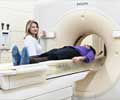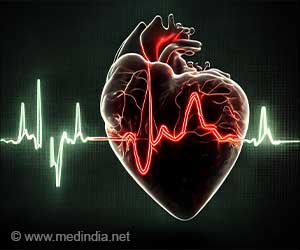A computed-tomography-based protocol that identifies both narrowing of coronary arteries and areas of myocardial ischemia has been developed by a team of researchers
A computed-tomography-based protocol that identifies both narrowing of coronary arteries and areas of myocardial ischemia has been developed by a team of researchers led by Massachusetts General Hospital (MGH) radiologists. This new development has the potential of giving a better indication of clinically significant coronary artery disease.
Their report appears in the September 15 issue of the Journal of the American College of Cardiology."This is among the first demonstrations of the use of cardiac CT [computed tomography] to detect both coronary artery stenosis and resulting myocardial ischemia simultaneously in a single examination," says Ricardo C. Cury, MD, a cardiac imaging specialist at the MGH Heart Center and the study's principal investigator.
CT scanning uses conventional X-rays to produce cross-sectional images of anatomic structures and can detect plaques in coronary arteries. But the appearance of plaques on CT images may not indicate whether or not they actually compromise the heart muscle's blood supply. More detailed angiographic images obtained via invasive cardiac catheterization give a better picture of how obstructive a plaque may be, and perfusion studies utilizing technologies such as MRI scans or the nuclear medicine technologies SPECT and PET reveal areas where limited blood flow has damaged the heart muscle, information that can determine whether a patient can be treated with drugs or requires surgical intervention.
Earlier studies showed that CT can identify areas of restricted coronary blood supply in resting individuals. The MGH-led study was designed to see whether a comprehensive cardiac CT examination could incorporate myocardial perfusion studies in both resting and stress situations along with the anatomic data provided by CT angiography. The study enrolled 34 cardiac patients who recently had SPECT stress tests and were likely to also require angiography via cardiac catheterization.
Participants first had a cardiac CT taken while receiving an infusion of adenosine, which produces physiologic stress symptoms such as elevated heart rate and blood pressure. When vital signs returned to normal several minutes after the adenosine infusion, a resting cardiac CT was taken. Both of those scans involved the use of contrast material, and to detect areas with little or no contrast agent – indicating restrictions to the myocardial vasculature – a third CT scan was taken 7 minutes later.
The accuracy of CT-based perfusion imaging in diagnosing coronary artery narrowing that significantly affected myocardial perfusion was virtually the same as SPECT stress imaging, and the results of coronary CT angiography also compared favorably to those of cardiac catheterization. Because the investigators used new radiation-dose-reduction techniques, the radiation dose of the three CT scans did not exceed the dosage involved in the SPECT stress perfusion study.
Advertisement
Advertisement
RAS















